
Paria Canyon-Vermilion Cliffs Wilderness

Vermilion Cliffs
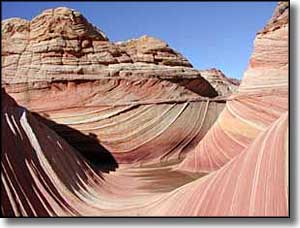
The Paria Canyon-Vermilion Cliffs Wilderness straddles the Arizona-Utah border with about 89,400 acres of the 112,500-acre property in Arizona. This is an area of soaring red walls enclosing serpentine canyons: extremely rugged and starkly beautiful. Some of these canyons are so narrow that the sky above is just a ribbon of light way up there... (The photo to the left is the Wave formation at Coyote Buttes.)
Paria Canyon-Vermilion Cliffs Wilderness is considered to be one of the premier canyon backpacking destinations on Earth. Beneath sandstone arches and above huge red rock amphitheaters you'll find hanging gardens of orchids and ferns. Throw in some beautiful erosion-carved hoodoos and forested terraces and this becomes an other-worldly place. Groups in this area are limited to 10 members, but less is better. This is a Pack it in, Pack it out area.
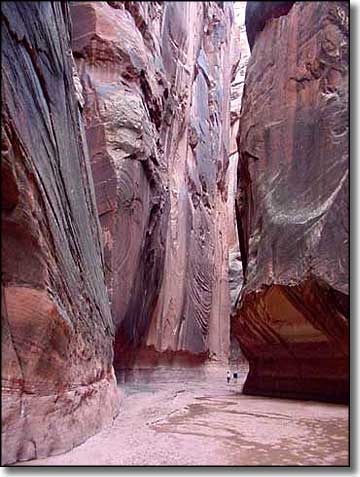
Most folks enter Paria Canyon from the White House Campground/Spring area, but some hardy souls prefer the much more difficult Buckskin Gulch Trail further to the west. Buckskin Gulch Trail runs about 12 miles down Buckskin Gulch and then drops into Paria about 7 miles downstream from White House Campground. At points, the bottom of the canyon is only 3' wide, and that final drop into Paria is a 30' climb down a rock jam. Before you go this route, you'll want a good weather forecast: flash floods can make for a 20' wall of water rushing down Buckskin Gulch.
The photo to the right might give you an idea as to what I'm talking about. It was taken in the bottom of Buckskin Gulch. There's two people walking in the photo, toward the lower right (just to give you an idea of the scale of this thing). This place is not for the weak-kneed or the faint-of-heart.
Outside the canyons, the massive and multi-colored Navajo sandstone walls of the Vermilion Cliffs rise as much as 3,000' above rugged arroyos and boulder-strewn slopes. This is huge, vegetation-challenged country... if you have a problem out here it's almost as bad as "Houston, we have a problem..."
The Ancestral Puebloans left campsites, granaries and petroglyphs that indicate they used this area between about 200 CE and 1200 CE. In the lower end of Paria Canyon they grew corn, beans and squash, and hunted bighorn sheep and mule deer, but they built none of the usual habitations that we find these days and attribute to them. The Paiute people came along later and used the area similarly, and also built no large constructions. The first recorded Europeans in the area came through in 1776. The Dominguez-Escalante Expedition camped at the mouth of Paria Canyon after failing to find a new caravan route between Santa Fe, New Mexico and Monterey, California. The 19th century brought outlaws hiding out in the canyons and miners searching for gold and silver. In the 20th century came an influx of miners searching out uranium. These days the primary human users of the Paria Canyon-Vermilion Wilderness are hikers, backpackers, campers and photographers.
The Paria Canyon-Vermilion Cliffs Wilderness was formally incorporated into the Vermilion Cliffs National Monument in 2000.
Wire Pass, Buckskin Gulch, Paria Canyon: These are now fee areas with permits required for overnight use. Groups are limited to 10 members, and no more than 20 overnight users per day from all trailheads. No permits required for day use, children 12 and under go free. No campfires allowed in Paria Canyon or Buckskin Gulch. Because nothing else works, pack out your used toilet paper. Special rules for dogs.
Coyote Buttes: Day use only, permits and fees required. Groups limited to 6 members. Coyote North: no more than 10 people per day. Coyote South: no more than 10 people per day. Special rules for dogs.
White House Campground: if you're going to camp, deposit your fees at the self-service fee station at the campground.
The northern portion of Paria Canyon-Vermilion Cliffs Wilderness is accessed via US 89. US 89A passes around the southern base of the Vermilion Cliffs. Access from the east is off of the Lee's Ferry road and access from the west is from BLM Road 1065 (House Rock/Coyote Valley Road).
USGS Maps: 7.5 minute: Arizona side: House Rock, Emmett Hill, Emmett Wash, Bitter Springs, Navajo Bridge, Lee's Ferry, The Big Knoll, One Toe Ridge, Coyote Buttes, House Rock Spring, Wrather Arch, Poverty Flat, Water Pockets, Ferry Swale. Utah side: Bridger Point, Glen Canyon City, Pine Hollow Canyon, West Clark Bench.
You'll probably also want to get a copy of the Arizona Strip District Visitor Map and the Hiker's Guide to Paria Canyon.

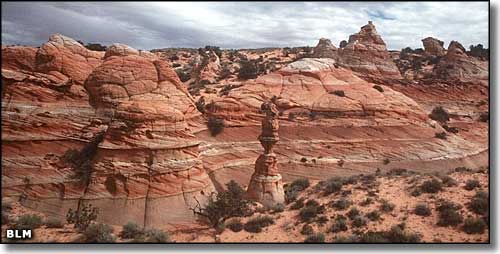
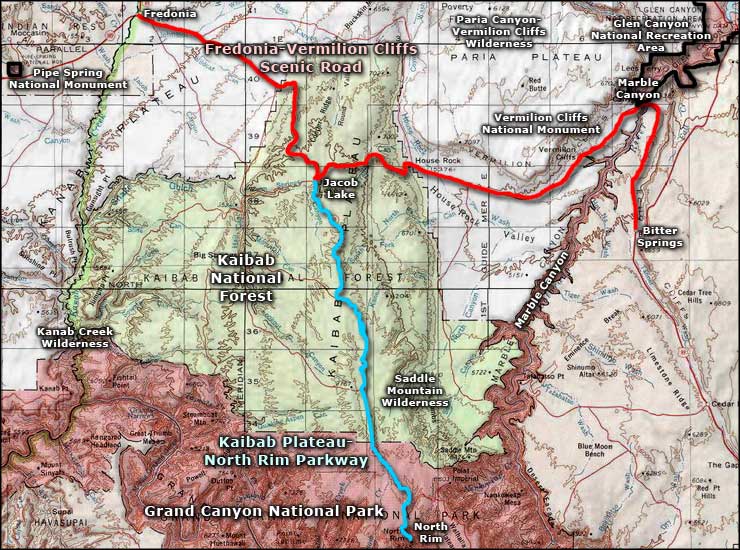
Paria Canyon-Vermilion Cliffs Wilderness area map
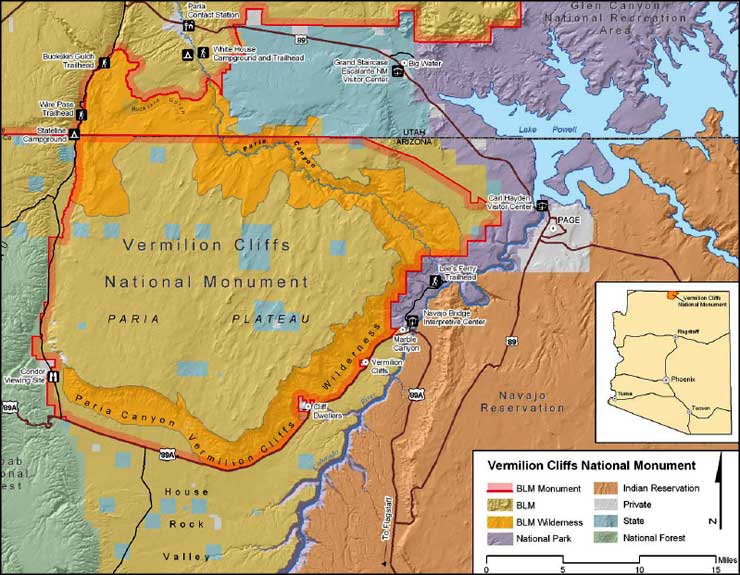
Buckskin Gulch - Paria Canyon Area
